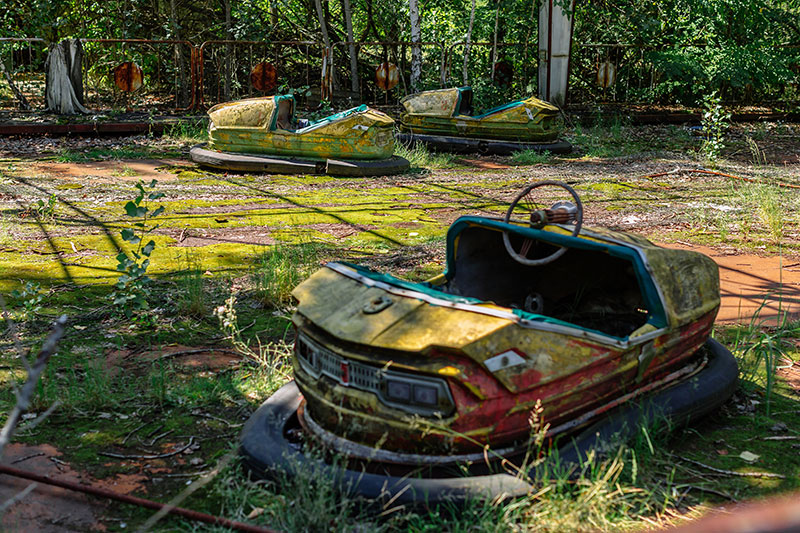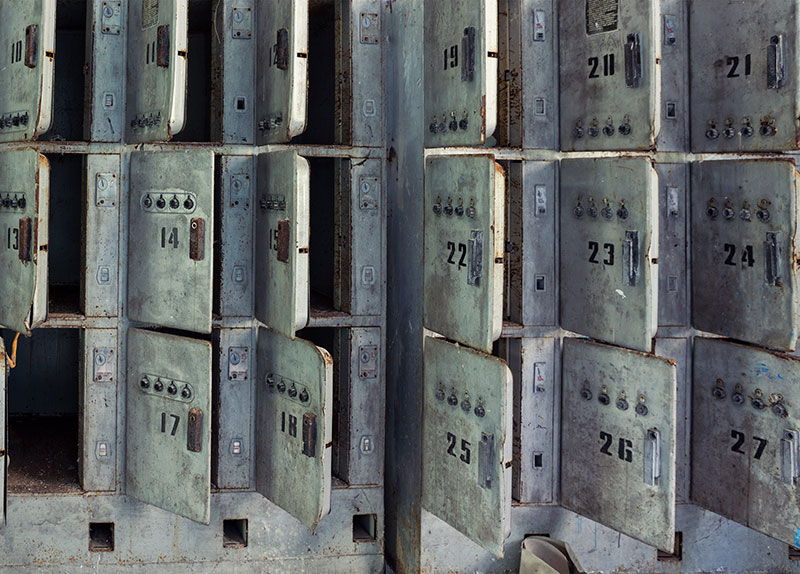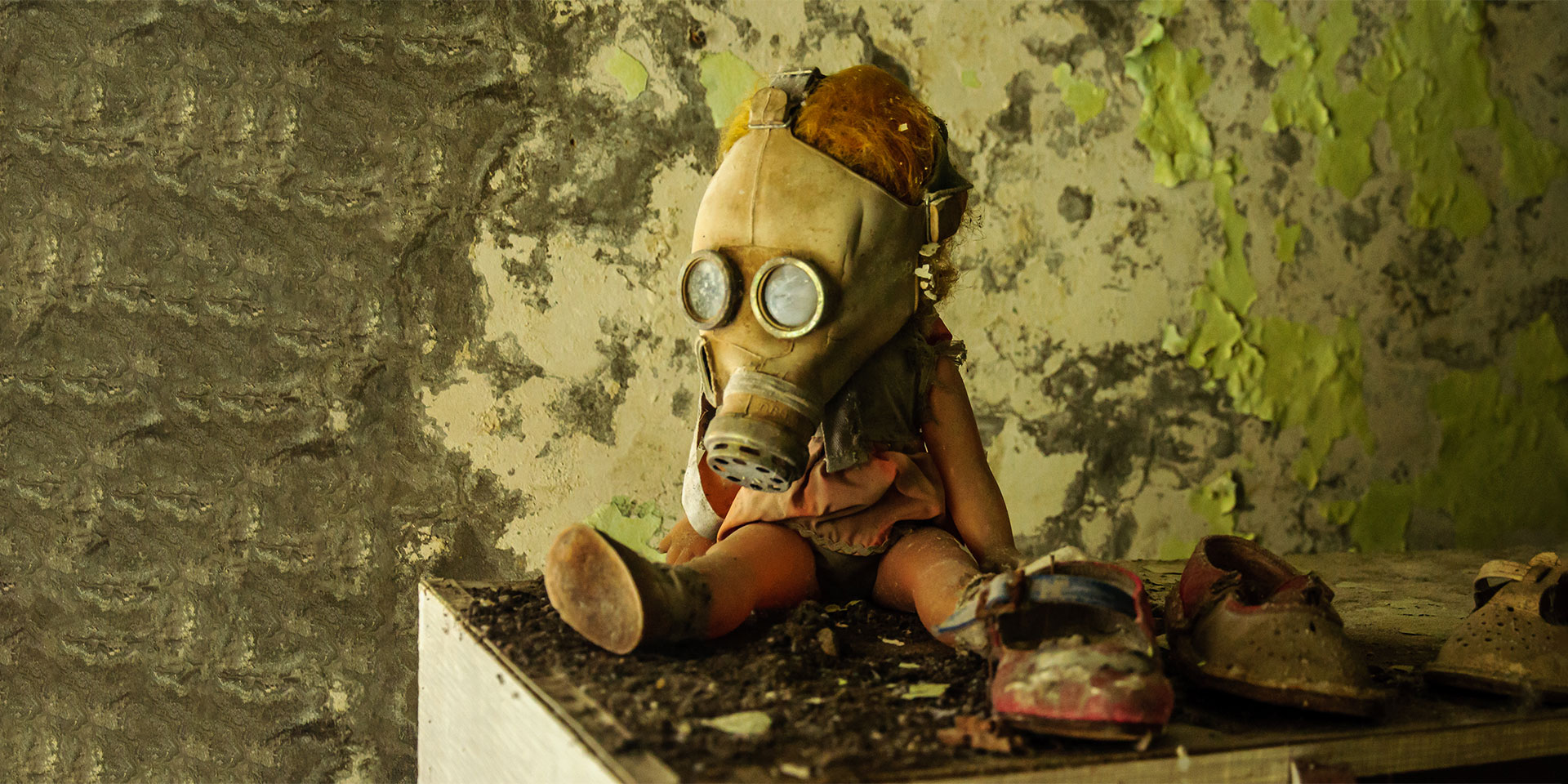On April 26th 1986, reactor 4 at Chernobyl nuclear power plant in Ukraine exploded. The effects were catastrophic—it was the worst nuclear disaster in history. The explosion let out the equivalent of 500 Hiroshima bombs-worth of radiation, and the area around Chernobyl—including the town of Pripyat—is now uninhabited. It will be unsafe to live there for the next 20,000 years.
My personal interest in Chernobyl came around 2010. During high school I researched abandoned places—ghost towns—and Chernobyl was a prime example. Because my parents lived in southern Poland at the time, they had legitimate concerns about radiation being sent all over Europe in the wake of the disaster. My mum later told me stories about how they weren’t allowed to go mushroom picking in the forest for the next ten years, and also about the anxiety she had before my oldest brother was born. She was pregnant not long after the accident, and there were already reports of children in Eastern Europe being born with severe birth defects.
The impact of Chernobyl was devastating. The official death toll sits at 31, which includes firefighters and plant workers. But, given the long-lasting effects of radiation, including increases in thyroid cancers across Europe, it is estimated that more than half a million people have died because of Chernobyl. We’ll never know the official number—because the Soviet Union lied.
When HBO’s Chernobyl television series was announced, my ears pricked up. The five episodes exhibit the horrific events that happened at the Soviet powerplant in painstaking and gruesome detail. It now ranks on IMDB as the highest-rated show of all time. But depicting the cost of the disaster isn’t the objective of the show; it’s depicting the cost of lies.

Why did Chernobyl explode? That’s what one of Russia’s top nuclear scientists, Valery Legasov, had on his mind when he was sent to Chernobyl in the immediate aftermath of the disaster. Tasked with stopping the reactor fire, he was told the level of radiation exposure had been at 3.6 roentgens; approximately equivalent to receiving 400 chest X-rays. It was later revealed station chiefs reported this figure because the dosimeters maxed out at that number, so that’s what the Soviet Union accepted. The true release of radiation was actually 15,000 roentgens.
As Legasov began to discover, the Soviet Union believed that, if it ignored the problem, it would simply go away. The whole population of the neighbouring town Pripyat had no idea what had happened and were being exposed to extremely high levels of radiation. Instead of being evacuated immediately, it was more than a day later before the people of Pripyat were ordered to leave all their personal effects and leave the town forever.
And then there were the all the lies the Soviets told themselves about the reactor itself. The power plant created electricity through fission—a nuclear reaction would create steam that would move a turbine. On the morning of April 26th, station chiefs decided to run a safety test; keeping power at a steady level of 700 megawatts. When the power dipped, station engineers were ordered to increase power by pulling boron control rods out of the reactor core. The resulting massive spike in power forced station staff to trigger a failsafe button that would re-insert all the control rods. It was meant to neutralise the reaction. Little did the station chiefs know that the boron rods had graphite tips that would actually increase reactivity. Re-inserting the rods caused detonation, and there were still other reactors around the Soviet Union with the same flaw. Legasov, who pled with Soviet officials to change this, committed suicide two years and one day after the accident. It was only after his death that the Soviet Union acknowledged the fatal flaw and set about fixing it.
Lying to someone else is bad enough, but what about lying to yourself? The Soviets’ continual denial of the truth left a devastating impact, not only for themselves, but the entire world. Denial: That involves believing convenient untruths that mask reality. It happened in Chernobyl, but how often do we do it? Denial is not being completely unaware; it is about remaining deliberately ignorant.

It’s easy to deny reality about unhealthy lifestyles, negative attitudes, pride and even relationship flaws. We know they exist, but we can sometimes be caught in a rut of doing nothing about it. To confront reality requires a large amount of humility.
The Bible has a classic example of how pride can result in denial. At the Last Supper, Jesus told Peter, “This very night, before the rooster crows, you will disown me three times” (Matthew 26:34). Peter knew that there was no way Jesus was lying, but he said, “Even if I have to die with you, I will never disown you” (verse 35). The first denial came after Jesus’ arrest, when Peter was accused of being with Jesus. “Woman, I don’t know Him,” he said (Luke 22:57). The second denial came in response to a servant girl, and the third came after accusations from the people around him. What was Peter’s reaction when he realised how far gone he was? “He went out and wept bitterly” (Luke 22:61).
This has to be the worst type of denial. We refuse to confront something within ourselves and our refusal hurts someone else. Especially those times when someone forces us to face some hard truths that we find difficult to handle. So we look for things within them to discredit what they have said about us. How can they look at my speck when they have a plank in their eye? we think. This type of argument is called an ad hominem fallacy, to attack a person in order to avoid the power of their argument.
To lie to ourselves is to deny our conscience, the very thing that keeps us on track. It can be so easy to do, and we get better at it the more we practise it. But Chernobyl is an example of why we should face the facts. Because what’s more dangerous than the lies we tell ourselves, is when those lies begin to define us.
The final episode of HBO’s Chernobyl shows Valery Legasov explaining to Soviet officials in a court setting what had gone wrong:
“I’ve already trod on dangerous ground; we’re on dangerous ground right now because of our secrets and our lies. They’re practically what define us. When the truth offends we lie and lie until we can no longer remember it’s even there. But it is still there. Every lie we tell incurs a debt to the truth. Sooner or later that debt is paid. That’s how an RBMK reactor explodes. Lies.”
Daniel Kuberek is assistant editor of Signs of the Times Australia.
This article appeared for the first time in Signs of the Times Australia.



















